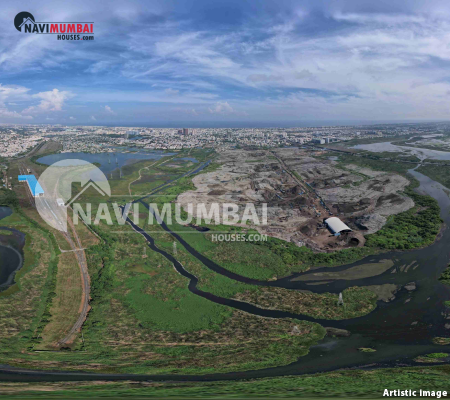
The Pallikaranai Marshland in Chennai, once spanning over 3,000 acres, is a designated Ramsar site (since April 2022) and forms a critical ecological buffer, flood-mitigation zone, and biodiversity hotspot. Yet, according to the NGO Arappor Iyakkam, government departments in Tamil Nadu have allegedly cleared a large real-estate project by Brigade Enterprises on 14.7 acres within the marshland’s boundaries — in defiance of the Wetlands (Conservation and Management) Rules, 2017, which prohibit construction in such zones.
The NGO has complained to the state Chief Minister, the Department of Vigilance & Anti-Corruption, and other authorities, alleging collusion among the Chennai Metropolitan Development Authority (CMDA), the State Environment Impact Assessment Authority (SEIAA), the State Expert Appraisal Committee (SEAC), and the Forest Department.
Why This Matters
A. Wetland loss & flood risk
The marshland absorbs stormwater, supports migratory birds (115 species), 10 mammals, 21 reptiles, and acts as a natural buffer for Chennai and Chengalpattu districts.
Construction inside the Ramsar-designated zone threatens to disrupt hydrology, reduce storage capacity, and exacerbate urban flooding. The National Green Tribunal (NGT) has already barred the CMDA from issuing further approvals till the wetland’s “zone of influence” is mapped.
B. Regulatory lapse & rights erosion
The NGO alleges that critical survey numbers (453, 495/2c, 496, 497, 498) covering 14.7 acres within the Ramsar boundary were used for the project. Yet the builder claimed the land was 1.28 km from the marsh. The forest department reportedly cleared it as 65 m away, leaving out key parcel numbers.
If confirmed, this shows systemic failure of verification by SEAC/SEIAA and possible misuse of records to enable real-estate clearance in a protected ecosystem.
C. Public trust & environment vs profit
The project was showcased during a state-level Global Investors Meet as a ₹2,000 crore investment.
When real-estate development compromises wetland protection for private gain, thousands of residents and future generations bear the risk — whether via floods, ecosystem loss or degraded quality of life.
What Should Be Done
Step 1: Freeze and review all clearances
The state must immediately suspend implementation of the project until a transparent forensic audit of approvals is completed. Clearances inside Ramsar boundaries are invalid under the 2017 Rules.
Step 2: Scientific boundary delineation & buffer notification
TNSWA (Tamil Nadu State Wetland Authority) and CMDA must complete and publish the Integrated Management Plan (IMP) with precise maps and a 1-km “zone of influence” buffer around the marsh. The NGT insists that no new approvals be granted until this is done.
Step 3: Accountability & transparency
Investigations by DVAC must determine whether officials breached duty, manipulated records, or granted approvals without due diligence. The NGO has documented anomalies.
Step 4: Restoration & public-interest protection
Any land illegally converted or cleared inside the marsh boundary must be reclaimed, and ecological restoration initiated. The marsh’s health is a public good — not a private construction field.
What Readers / Citizens Should Do
-
Civic groups, residents in Chennai, should monitor new real-estate approvals near the marsh and demand proper disclosure of survey numbers, hydrology reports, and wetland boundary maps.
-
Buyers considering purchases in the Perumbakkam-Pallikaranai area should verify the land’s status via TNSWA maps and check whether the parcel falls within or adjacent to the Ramsar boundary.
-
Developers must proactively ensure compliance and publish due diligence showing they are outside protected zones and have completed environmental impact studies.
-
Policymakers must prioritise wetland conservation in Chennai’s master planning, mandatory buffer enforcement, and strict penalties for breaches.
Conclusion
The allegations by Arappor Iyakkam about a large-scale real-estate project being cleared inside the Pallikaranai Marshland Ramsar site raise grave concerns — not just about one development, but about Chennai’s ability to safeguard critical ecosystems amid rapid urbanisation.
What happens now matters: if the state acts decisively to annul improper approvals, restore the marsh, and enforce buffer zones, it will show that ecological futures matter. If not, the marsh — and the flood-shield it provides — will continue to shrink beneath the concrete. The condition of one marsh is telling of how we value our urban ecology.
Visit Us: Navimumbaihouses.com or Call Us @ 8433959100
The post Housing Project Inside Wetland? NGO Claims Approvals Given for Site Within Pallikaranai Ramsar Area appeared first on .

